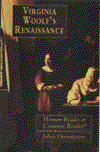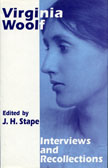Virginia Woolf's Renaissance
“Juliet Dusinberre makes a substantial contribution to Woolf studies with her incisive study of Elizabethan influence on Virginia Woolf.”—English Literature in Transition
“This is a well-written, lucid, balanced, feminist study of Woolf's literary precursors…A fine source for courses in modernist literature, gender studies, and literary criticism.”—Choice
“…Dusinberre's text has much to offer Woolf scholars. The best parts of Dusinberre's text are her richly contextualized readings of her selected “outsiders”; placing them in the context of other writers—both contemporaneous and distant—as well as the social, political, and cultural events which impinge upon them, she provides a detailed exploration of Woolf's multi-leveled connections to these writers. Dusinberre's readings move us around, as Montaigne advocates, taking us in many new directions, and encouraging us to trespass on new territory.”—Woolf Studies Annual
In this carefully constructed book, Juliet Dusinberre explores Woolf's affinity on many levels with the early modern period and her sense of being reborn though the creation of an alternative tradition of reading and writing whose roots go back to the Elizabethans and beyond. Dusinberre offers a critique of Woolf's ideas through a discussion of particular writers—Montaigne, Donne, Pepys, and Bunyan, Dorothy Osborne and Madame de Sévigné—and of the literary forms of the essay and the personal letter and diary, forms traditionally associated with women. Questions about printing, the body, and the relationship between amateurs and professionals create striking connections between Woolf and the early modern period.
Virginia Woolf was extraordinarily daring for her time in making her assumptions about culture explicit. In Virginia Woolf's Renaissance, Juliet Dusinberre reveals a new Virginia Woolf, more radical, energetic, and socially aware than the popular image of a Bloomsbury aesthete, who constructed a Renaissance for women to which she herself could not belong.




